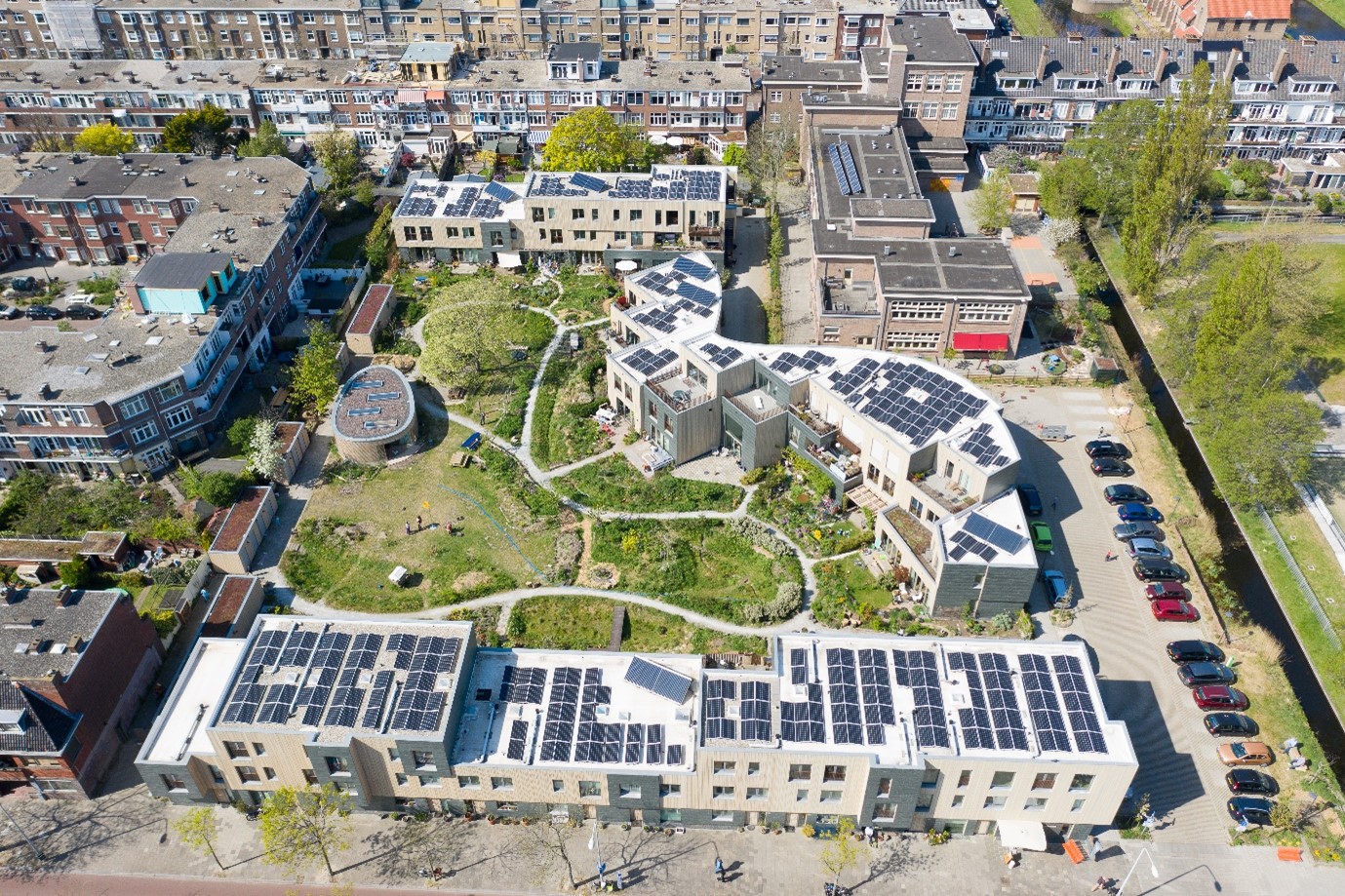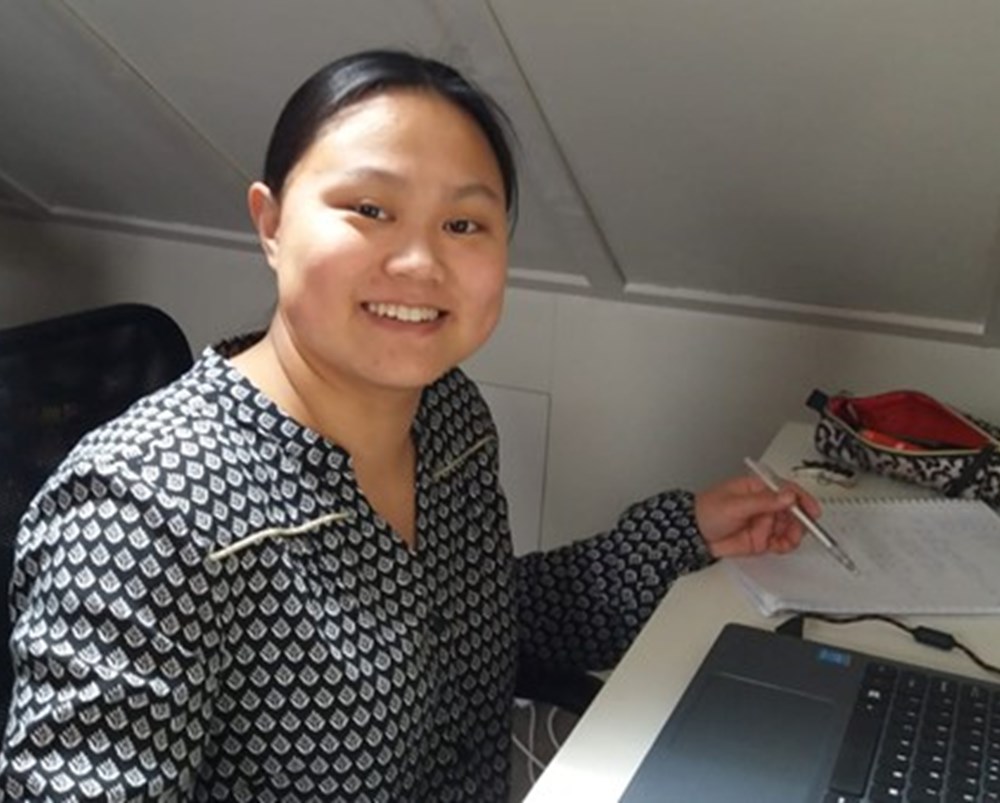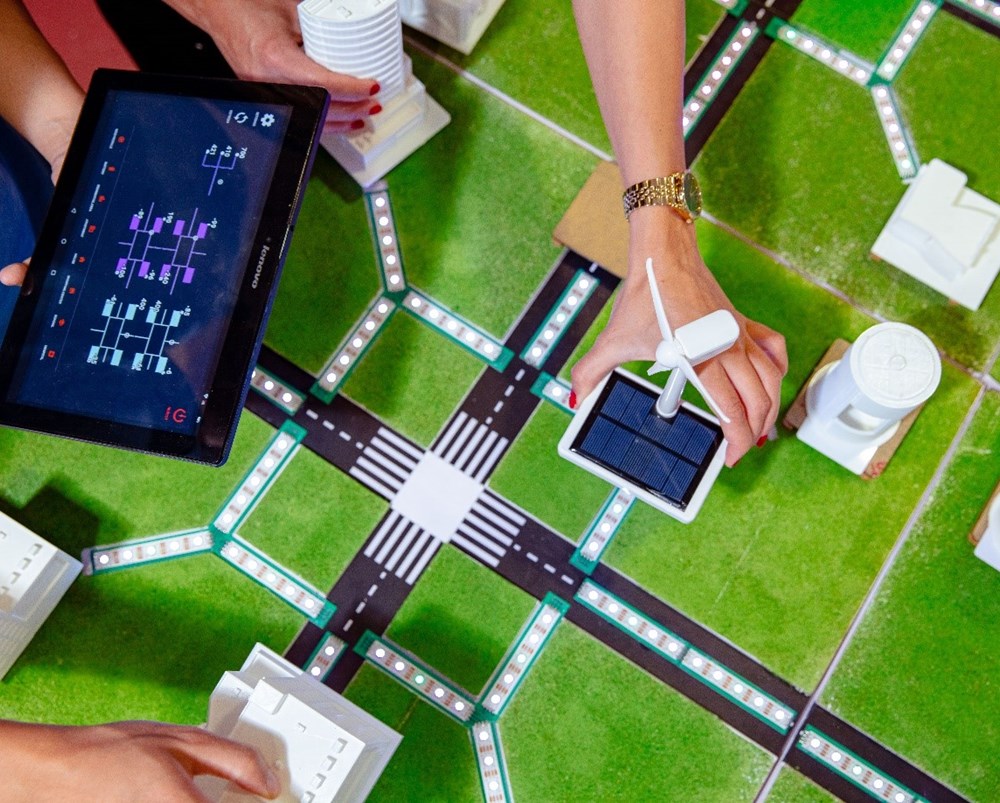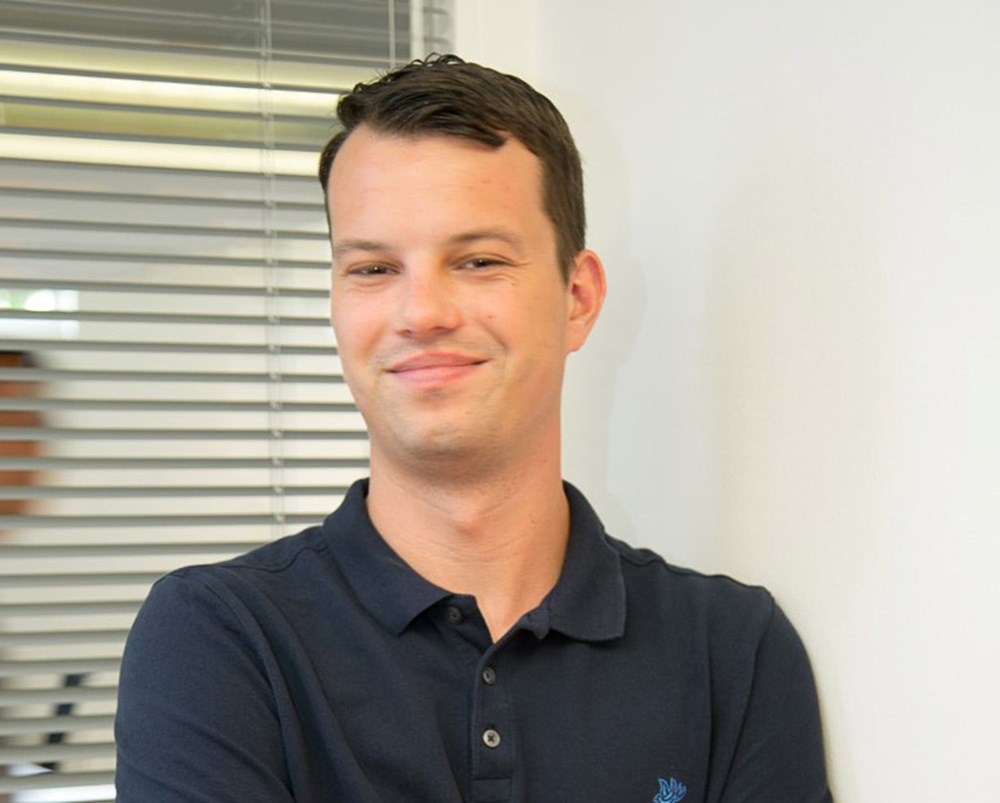Life as a student - Optimizing Smart Grids on the school's roof
"Measurement and regulating systems are a bridge to sustainable energy", says Gopi Logasubramanian, international student at the HAN University of Applied Sciences (HAN).

Aerial photograph of 'Groene Mient', a neighbourhood in The Hague where experiments with sustainable energy technology are ongoing
Logasubramanian is one of the five master students from Engineering Systems (these students are taking the master tracks Control Systems or Sustainable Energy) who are graduating with the HAN's research group Measurement and Regulating Technology; this group specialises in controlling energy flows and focuses on the energy transition.
Master student Logasubramanian is currently optimising a micro grid. On the HAN's roof are solar panels that are connected to battery storage, a control unit and charging points for electric vehicles. "There are two modes in which the system operates: one that connects it to the electric grid and one in which it is isolated from the grid", the master student explains.
"My aim is to implement artificial intelligence, so the energy flows can be improved." Logasubramanian's system will, in future, determine the right moment for the batteries to charge or discharge. It will happen based on weather predictions, among other things, so that the system will 'know' when it can expect energy generation.
Smart grids in the energy transition
Intelligent control systems play an important part in the energy transition. In built environments, we are increasingly seeing a combination of locally generated energy, energy from the public grid, electric vehicles, and storage. Not just charging points at the parking lot of a university of applied sciences, but entire neighbourhoods are supplied with smart grid technology.
But just what would a sustainable-energy network would look like on a larger scale? Master student Arjun Nair has the answer. He is conducting research on behalf of the research group Measurement and Regulating Technology, in a social-ecological housing project: Groene Mient. This residents' initiative in the neighbourhood Vruchtenbuurt in The Hague contains 33 houses without a gas connection. Groene Mient is a living lab. It is a testing ground for the development of an experimental smart grid in the Vruchtenbuurt, a neighbourhood with approximately 5000 houses.
"Solar energy is being generated in Groene Mient, but not at the times when it is most needed. The consumption peak is generally in the evening, when large devices are used, such as heat pumps", according to Nair. The solar energy that is not used in the district, will leave the area through the electric grid. Inhabitants believe that this should change.
"In my project, the unused solar energy is stored in a battery and I regularly check when households use the most energy." The student is examining two scenarios: one in which every house will get its own battery and one in which the entire neighbourhood uses the same energy storage system.
Aspects in a living lab
Nair is also analysing a number of future scenarios. In Groene Mient , the energy supply is being made more flexible. The residents' initiative is working on a vehicle-to-grid system, for instance, which can charge electric vehicles, but can also supply energy to the grid.
Nair can connect technical components and energy flows. "It is particularly interesting to me that he is doing research from a more holistic perspective on the grid. [...] He is trying to understand the entire system, not just the batteries we want to implement", says Suzanne van Dijk of 'Sterk op Stroom', the energy cooperative of Groene Mient.
Optimising the energy supply for the 33 energy-neutral houses of Groene Mient is actually not the main objective. Especially the knowledge gleaned from the student project, aimed at the entire neighbourhood, is valuable. "The goal is to use that knowledge – including details about measuring and controlling the energy in the living lab – going into the pilot phase", according to Willie Berentsen, director at Sterk op Stroom.
The experimental smart grid will be expanded in future. "We are aiming to complete the development phase in 2023 and execute a serious pilot, after which we will be scaling-up from approximately 30 to 300 houses. At that stage, we will be applying all the knowledge and experience that we have gained from these thirty houses in pre-war neighbourhood Vruchtenbuurt in The Hague."
From cooperative to enterprise
If the choice were given to him, Berentsen would like to go a lot further than 300 houses. "If we can create a feasible business case by 2025 – by delivering locally generated sustainable energy as well as additional services, such as car-sharing – we will go into the operating phase. The cooperative Sterk op Stroom will then become a social enterprise with the ambition to supply to members of the cooperative in the Vruchtenbuurt.
The research of the HAN master student will play a part in the scaling-up. "He will make calculations for all the different scenarios and can create models based on the planned expansion of the project", says Berentsen. "The HAN has the tools to create a model for the medium-voltage segment. That will include the cable capacity, the capacity of the transformers and how these are connected to one another.
"If one of the master students can include our medium-voltage segment in the model for the Vruchtenbuurt, that allows us to simulate how we can optimise the grid balancing. [...] That means that energy supply and storage – such as the rental batteries that will be used there – can be controlled. In other words: part of the medium-voltage electric grid in the western part of The Hague can be adjusted, so that it does not require additional capaci ty.
The collaboration with the HAN is therefore incredibly important to realise a more sustainable Vruchtenbuurt. The HAN, as well as other knowledge institutions – such as The Hague University and Delft University of Technology – play an important part in Groene Mient. Van Dijk: "This is a testing ground, but we are not yet aware of all the possibilities. Research groups focus on their own expertise and know which interesting questions can be answered through data analysis. The collaboration regularly yields something that allows us to move further in our development."
This is a translation. Click here for the original Dutch article.





